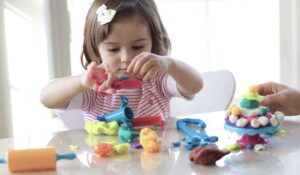HAND PARALYSIS IN NEWBORN
HAND PARALYSIS
Hand paralysis in new born is not a very common condition but it occurs in many babies and it notice after some time. It has a proper term called Erb’s palsy. It is initially frightening. The infant’s arm hangs limply from the shoulder with flexion of the wrist and fingers due to weakness of muscles innervated by cervical nerves.
Risk factors are macrosomia (large baby) and shoulder dystocia. However, Erb’s palsy may occur following cesarean section delivery. The experience of the delivering physician may not influence the risk of Erb’s palsy (0.9 to 2.6 per 1000 live births). Fortunately, the rate of complete recovery is 80% to 96%, especially if improvement begins in the first two weeks. Recommended treatment includes physiotherapy early immobilization followed by passive and active range of motion exercises (although there is no proof that any intervention is effective). For the few infants with no recovery by three to five months, surgical exploration of the brachial plexus may improve the outcome.
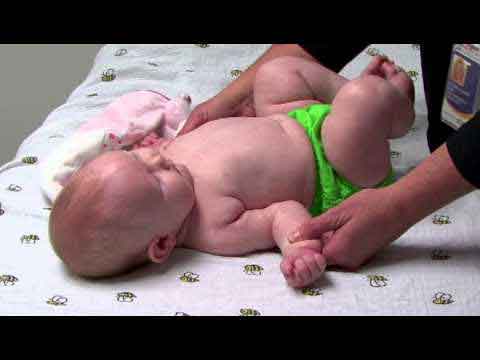
Erb’s palsy is initially frightening. When a newborn has a nerve (brachial plexus injury (BPI), it is often assumed that poor obstetrical (delivery) technique is to blame. However, there is controversy about the role of the delivery ‘operator’. The main risk factors for BPI are large fetal size (often from maternal diabetes) and shoulder dystocia.
Fortunately, nearly all affected infants recover in the first few months. Surgical exploration may assist some infants with no recovery by five to six months. Only the rare child is left with a significant disability.
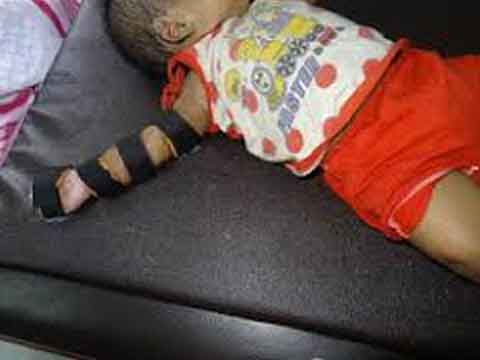
CAUSE
Erb’s palsy is a condition caused by nerve damage, and it most often occurs in newborns. The damage is to the brachial plexus, the bundle of nerves running from the spinal cord, through the neck, and down each arm. These nerves are responsible for movement and sensation throughout the shoulder and arm and, when damaged, can lead to weakness or total paralysis. The amount of impairment varies depending on the extent of the damage. This damage most often occurs in newborns because it happens during childbirth. Most babies will recover within a few months with no intervention or with just physical therapy. Severe injury may require more extensive treatment ranging from various types of intensive physical therapy to surgery. Some children will recover all movement and feeling, while a few will never fully recover in spite of treatment.
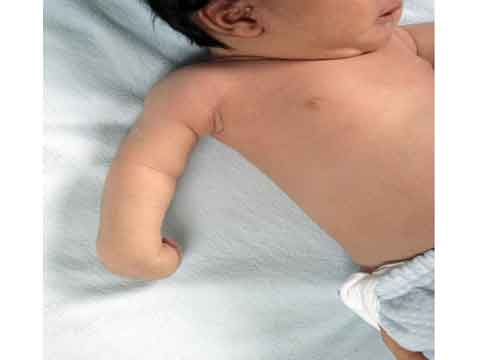
Recovery
During the delivery process, there is always a risk that the brachial plexus nerves will be overstretched in an infant. The risk is greater for breech births, large babies, and those with shoulder dystocia or otherwise difficult and prolonged labor.
The nerves may stretch just a little bit, causing stress; they may stretch enough to cause some damage, or they may even stretch to the extent that they are torn away or separated from the spinal column. Fortunately, the majority of cases of Erb’s palsy involve minimal damage to the nerves. For these newborns, a few months, possibly up to nine months, is all it takes for the nerves to heal naturally. Most infants with this condition will only need physical therapy treatment. Exercise and moderate use of the affected arm is enough to facilitate healing of the nerves and the restoration of normal movement and sensation. For those who experience more considerable nerve damage, there are treatment options that can help.
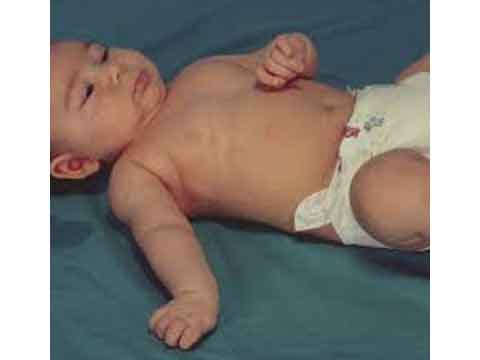
Physical and Occupational Therapy
The most commonly prescribed treatment for Erb’s palsy is physical therapy. Even for infants with minor damage to the brachial plexus, this kind of therapy is recommended to speed healing and optimize the chance that the child will achieve full use of the arm.
There is also a specialized form of therapy called occupational therapy that focuses on the use of fine motor muscles and feeding, which can greatly assist in recovery. The best results from both physical and occupational therapy for Erb’s palsy come from starting it as early as possible.
The exercises used for an infant with Erb’s palsy are very mild and gentle. Those most commonly recommended include gentle massage, strength exercises, range of motion movements, stimulation exercises, and gentle stretching.
Since an infant cannot do these exercises alone, of course, an adult must move the arm for the baby. Therapists can also demonstrate methods by which parents can encourage their infant to move the affected arm naturally, allowing for a more active form of therapy.
Sessions should be conducted with a professional Pediatric physical therapist, and parents are instructed on how to continue these exercises at home for the best overall result.
Another aspect of physical therapy is the use of splints, braces, and tape to promote proper alignment of joints and to train the infant’s arm, wrist, shoulder, and hand to position and move in the anatomically correct ways that promote healing. These devices may also help to prevent deformities that can result from improper positioning.
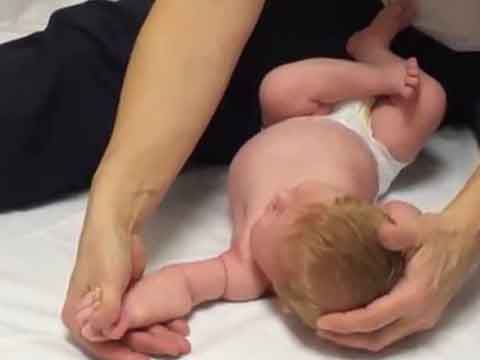
Recreational Therapy
As an infant with Erb’s palsy grows and develops, recreation should be encouraged. Parents may be afraid to let a child that has experienced nerve damage and paralysis-engage in activities. However, most types of recreational activities, movement, and exercise are beneficial. Any child growing and healing from Erb’s palsy should be encouraged to try recreational activities that promote movement of the arm and shoulder, including climbing, crawling, swimming, wheelbarrow walking, and throwing.
If a child with Erb’s palsy shows no signs of healing by about six months of age, or if the healing process is too slow or inadequate, surgery may be an option to restore movement and feeling. The purpose of surgery is to repair the damage done to the nerves of the brachial plexus or to relieve pressure on the nerves, so they have a better chance of healing naturally.
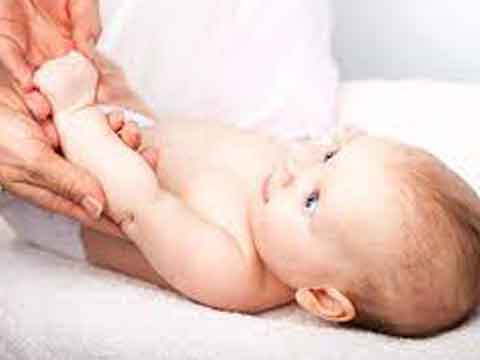
The latter type of surgery is minimally invasive and can be done for a child of any age. It relieves pressure placed on damaged nerves and promotes healing. The effectiveness of this strategy varies. More aggressive types of surgery attempt to actually repair or replace the damaged nerves using donor nerves. If there is a tear in a nerve, but it is still connected to the spinal cord, a graft from a donor nerve can be attached to it to make the repair. A complete nerve transfer is performed when a nerve has been completely detached from the spinal cord.
After these types of surgeries, a child needs extensive physical therapy and a lot of recovery time. For cases in which Erb’s palsy is severe enough to warrant surgery, complete recovery is not likely. Most children having this kind of surgery will see improvements, but may never have complete use or sensation in the affected arm.
Neuromuscular Electrical Stimulation
In addition to the more traditional treatments for Erb’s palsy—surgery and physical therapy—there are some other strategies that may help. One of these is neuromuscular electrical stimulation. This involves stimulating muscles in the affected arm with an electrical current. It has been shown to build muscle and improve blood flow in babies, but studies of the technique are few. This type of treatment may also be useful in minimizing the eventual weakening of muscles that a child with Erb’s palsy is unable to use naturally. The effectiveness of this treatment are there, but one showed that the children receiving it had improved range of motion in the shoulder and elbow joints. For some of the children in the study, planned surgeries were postponed due to the success of treatment.
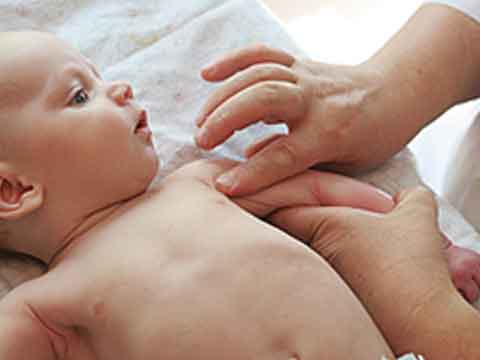
TREATMENT OF HAND PARALYSIS IN NEWBORN FROM BEST PEDEATRICS PHYSIOTHERAPIST IN DHAKOLI….
Hand paralysis is not a very common condition in infant. It need to be treated on time with expert and experienced practitioner. Pediatrics physiotherapist is one who can treat as well as guide you well. Blossom Physiotherapy Center in Dhkoli provides excellent services in rehabilitation. Here Dr.Jyoti Gupta (MPT pediatrics) that is a Pediatrics Physiotherapist as well as a certified Yoga instructor she complete her course from a well known YOGA ALLIANCE INTER NATIONAL FnY STUDIO is a head of the center and senior physiotherapist. She is having a massive experience in the field of pediatric and always comes with positive result. And has team of staff such as Physiotherapist, Pediatric physiotherapist, Pediatrics-Neuro physiotherapist, Occupational therapist, Speech therapist, Special educators, Moreover blossom physiotherapy center has ultra-modular modalities which enhance the recovery of the patients.
If you have an infant with Erb’s palsy, there are many treatment options available. Luckily, most babies will only ever need physical therapy to recover the full use of the arm. For those that have experienced more damage, however, surgery and alternative treatments may helpful but with physiotherapy it becomes more effective. With your medical team, you can learn more about the different options and make the best, most informed decision for your child with proper guidance. And blossom physiotherapy provides the same. Furthermore in this pandemic blossom physiotherapy center follow proper covid protocol and maintain proper hygiene. I will recommend you to visit at least once and feel the difference. So in the end Blossom physiotherapy is ready to help you in every manner. For further information log into http:/www.blossomphysitherapy.in/


